Did you know that Millennials make up about 22% of the US population and as much as 33% of the US workforce? I didn’t. But, being a Millennial myself, I find it essential to understand how successful cross-generational workplaces are even possible.
The way we communicate at work (and in general) is greatly affected by the time we were born and the time we are now living in.
What’s interesting, though, is that certain historical events have made a significant impact on our values and norms in all spheres of life — even affecting the way we communicate at work.
Why is this important? Well, many present-day companies are now handling a multi-generational workforce in which members of several generations are learning to communicate, collaborate, and cooperate for the greater good of the organization.
Are you now picturing a multi-generational workplace? I am, too. Do you think such a workplace can be successful? Well, I believe it can, with proper guidance and mutual understanding. (I know, I’m such a Millennial.)
There’s no one road to success and no one way to make a multi-generational workplace work. We can help you with this by outlining communication preferences by generation and discussing common challenges that usually arise in cross-generational work environments. We’ll also try to provide you with practical ways to improve how your diverse workforce communicates at work.
Stay with us as we embark on this cross-generational adventure.

Table of Contents
Communication preferences by generation
While it’s crucial to treat each employee as an individual and not succumb to generational bias, being aware of some general differences between generations isn’t a bad thing. Although not all generations are members of the global workforce, we can account for seven living generations:
- The Greatest Generation (born 1901–1927)
- The Silent Generation
- The Baby Boomers
- Gen X
- Millennials
- Gen Z
- Generation Alpha (born 2013–present)
To get a better understanding of what shaped the five working generations’ views of workplace communication, let’s examine what events have made an impact on them, what they expect at work, and how they prefer to communicate with others:
The Silent Generation: “Traditionalists”
- Born between 1928 and 1945
- Age 76+
- They make up about 2% of the US workforce
🔸 Who is the Silent Generation?
Growing up in the shadow of the Great Depression and WWll, the Silent Generation is the second oldest generation alive (preceded only by the Greatest Generation). Some of them are still working — some because they want to, others because they have to. They were raised in a world without present-day technology and other modern amenities. Many have lived through difficult economic times and have thus learned to be financially diligent. Thanks to their strong core values, they work very hard.
🔸 Ideal workplace setting for the Silent Generation
Although being familiar with modern technology, most Silent Generationers aren’t that comfortable using it. To create a positive work environment for a member of this generation, you should try to provide offline options for task completion and project management. This generation appreciates personal interactions and is most likely to thrive on face-to-face communication.
🔸 How to manage a member of the Silent Generation?
Silent Gen prefers speaking upfront and having in-person discussions. Your entire workforce could benefit from picking the brains of Silent Generationers, so encourage them to share their knowledge and expertise with others. To truly connect with a member of the Silent Generation, go with a written note.
🔸 Preferred way of communication for the Silent Generation
Most members of the Silent Generation prefer a strictly formal way of communication. They remain faithful to the written word and appreciate being consulted for important questions or problems. For them, respect, hierarchy, and experience play a crucial role — they tend to reinforce the use of formal titles. Moreover, they are great rule-followers with respect for authority and structure, including perfect grammar and impeccable manners.
The Baby Boomers: “The Counterculture Generation”
- Born between 1946 and 1964
- Age 57–75
- They make up about 25% of the US workforce
🔸 Who are Baby Boomers?
The members of the Baby Boomer generation are considered the wealthiest and most influential generation in the world — they make a significant part of the modern-day workforce. They have lived through some quite violent events, including several wars, the JFK assassination, and the MLK assassination. Despite that, Baby Boomers are known for their work-ethic and goal-centric tendencies — many hold positions in state and federal governments. Even though they didn’t grow up with technology, they are more comfortable using it at work.
🔸 Ideal workplace setting for Baby Boomers
For Baby Boomers, job security is a top priority. Similar to the Silent Gen, Baby Boomers thrive on formal and structured work settings. Having been raised without digital communication, this generation is more compliant with group meetings interactions and generally more flexible at work.
🔸 How to manage a member of the Baby Boomer Generation?
Hard-working as they are, Baby Boomers value being recognized for their knowledge and skills. They are usually experts in their fields and are often very happy to share their knowledge. They should be encouraged to mentor younger workers.
🔸 Preferred way of communication for Baby Boomers
Great supporters of face-to-face communication, Baby Boomers value formality and directness in communication. They also tend to rely on email and phones for workplace communication, considering that’s the closest there is to in-person communication. Baby Boomers appreciate being given background information and details. They like their communication balanced between email, voicemail, meetings, and in-person communication.
Gen X: “The Slacker Generation”
- Born between 1965 and 1980
- Age 41–56
- They make up about 33% of the US workforce
🔸 Who is Gen X?
The members of Gen X were mostly shaped by two major events — the Challenger disaster (1986) and the Gulf War (1991) — but others had their share as well. Coming between the Baby Boomers and Millennials, Gen Xers are sometimes referred to as “in-betweeners”. Self-reliant, resourceful, and industrious, this generation has also been shaped by the rise of personal computers.
🔸 Ideal workplace setting for Gen X
The majority of the Gen Xers prefer a work environment that puts more emphasis on individuality. In an ideal workplace, they would be provided with greater physical and psychological space and the flexibility to manage their workload and achieve “a healthy work-life balance” — many believe they were the ones to invent this phrase.
🔸 How to manage a member of Gen X?
Gen Xers aren’t fond of being supervised and would thrive on being allowed greater autonomy to complete their work-related tasks. Most members of this generation are already well-established in their careers and can be resourceful assets to the entire company thanks to their immense experience.
🔸 Preferred way of communication for Gen X
Generation Xers appreciate flexible and informal communication, making them comfortable using various channels of communication. Members of this generation mostly prefer communicating via emails, but an occasional phone call, text, or meeting will also do the trick. They also feel that the technology should support their professional growth but are known for shunning micromanagement in the workplace. They prefer being contacted only during office hours, as they value their freedom and time off immensely.
Ditch email and improve your communication by switching to Pumble
Millennials: “The Last to Grow up Offline”
- Born between 1981 and 1996
- Age 25–40
- They make up 33% of the US workforce population
🔸 Who are Millennials?
Comprising the majority of the current workforce, the majority of Millennials cite 9/11 as the event that has made the greatest impact on them. Many of them have started working during the Great Recession, which additionally shaped their view of long-term careers. As they grew up in the Internet revolutionized society, they find it easy to adapt to and accept digital communication and modern technology.
🔸 Ideal workplace setting for Millennials
For most Millennials, understanding their company’s vision and doing a job that helps make the world a better place is the dream work setting. They are always looking for a deeper meaning, so nurturing, inclusive, and diverse work settings work to their advantage. They are the first generation to fully embrace remote and hybrid work — considering that the majority of them do jobs that can be completed outside the office, such as project management positions, designer positions, or content production positions.
🔸 How to manage a member of the Millennial Generation?
Supporters of constructive feedback, Millennials value transparency and honesty, both in life and at work. According to them, employees shouldn’t be judged by the number of hours they spend working but rather by the quality of their work — making them amazing at multitasking. This generation will thrive in a work environment that ensures clarity and takes care of their well-being — Millennials will feel appreciated and motivated to do their best work there.
🔸 Preferred way of communication for Millennials
Considering they grew up texting their friends and family, most Millennials appreciate communication that facilitates team collaboration and teamwork. They thrive on using instant messaging, chatting, and emailing — they don’t feel the same about in-person meetings and conversations. According to a CompTIA report, 71% of Millennials said they would choose their workplace based on the technology it offers. Moreover, they are the ones supporting the embrace of cloud-based technology in the workplace.
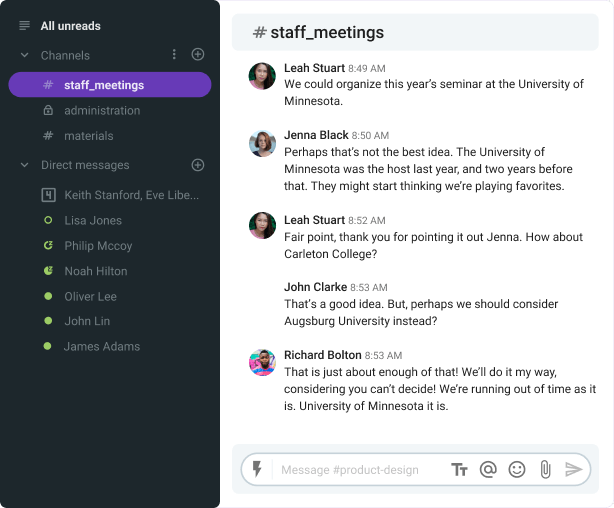
Gen Z: “The Technology Inherent”
- Born between 1997 and 2012
- Age 9—24
- They make up 20.3% of the US population
🔸 Who is Gen Z?
The youngest generation in the workforce, it’s hard to say what events will impact Gen Z. Born and raised as digital natives, they are greatly dependent on smartphones and other modern devices. Thanks to the environment they grew up in, they are more focused on people and their personalities, rather than race or ethnicity.
🔸 Ideal workplace setting for Gen Z
Some of them have witnessed the 2008 financial crisis, so Gen Z members value security at work above anything else. When looking for a job, they mostly focus on stable and long-term opportunities — they will stay with the same company for a few years before moving on. Their ideal workplace would be a flexible one that allows them complete tasks as they see fit and includes them in process improvements. Flexible working hours and social responsibility are also quite high on their workplace priority list.
🔸 How to manage a member of Gen Z?
Gen Z prefers highly collaborative management relationships and engaging with others in person. They look up to companies with a clear and strong mission, believing this helps them learn and grow professionally. Companies that take good care of their employees by investing in their development are the best ones for Gen Zers — they will thrive on the possibility of being mentored, coached, and taught by senior employees.
🔸 Preferred way of communication for Gen Z
With Gen Z, communication should be as transparent as possible — this is why they need immediate feedback. They can’t understand how people managed to work without technology as they were practically born with smartphones in their hands. They rely on video and voice communication, preferring to do most of their work with their mobile phones. Their expectations are high when it comes to the technology at work and would prefer to use their own devices for work purposes.
The overview of communication preferences by generation
In his piece on communication between different generations, Robert Muray illustrates the key differences between Baby Boomers, Gen X, and Millennials in the workplace. For the needs of the growing workforce, we’ll expand his illustration to include the Silent Generation and Gen Z as well. Here are the key differences in communication across different generations:
| Silent Gen | Baby Boomers | Gen X | Millennials | Gen Z | |
|---|---|---|---|---|---|
| Communication 🗣️ | Face-to-face | Face-to-face, email, or phone | Email, phone, or text | Text or IM | IM, video, and voice |
| Attitude to work🧑💻 | Long-term | Loyalty first | Working to live | Pleasure then work | Make me grow |
| Informationℹ️ | Written or printed | Printed or digital form | Digital form | Information overload | Information mastery |
| What they want at work👔 | Respect the hierarchy | All about the titles | Ideas, ideas, ideas | Flexibility first | Progress, progress, progress |
| Focus 🧐 | Recognition | Process | Results | Involvement | Collaboration |
| Priorities 🔖 | Rules | Results | Work-life balance | Honesty and transparency | Security |
Common challenges that arise due to communication differences between generations
I have equipped you with the basic knowledge to understand what has affected each generation and shaped the way they communicate.
And now what?
Now forget everything you’ve learned so far about handling a multi-generational workplace and go back to the start. The evolution of remote, hybrid, and distributed teams has had companies starting all over, rewriting their policies, allowing things they never had before, and working twice as hard to simply make it work.
The same applies to communication as well — modern communication technology is evolving, too, but are the people following? While communication barriers have always been present in any workplace, in these circumstances, they have become even more prominent.
Before I go on to give you tips on what to do to make communication better among Millennials, Baby Boomers, the Silent Gen, Gen X, and Gen Z, let’s quickly acknowledge the possible challenges that might arise in multi-generational workplaces.
Misunderstanding, miscommunication, misconception
Most companies with a multi-generational workforce often come across bumps along the road, be they in the form of misunderstandings, miscommunication, or misconception. Although there’s no way to know what problems await you at work, acknowledging them and trying to overcome them is simply a must.
The essence of communication is getting the message across, yet, this might seem impossible with members of different generations working in the same place. When everyone has their own view of a certain problem or situation, they might find it difficult to see things from another person’s perspective — ultimately leading to conflicts.
Multi-generational companies are often exactly like that — packed with people who sometimes have a hard time putting themselves in other people’s shoes. Yet, it’s essential to work past all the mis-ings to find a mutual language.
Avoid miscommunication — try Pumble
My language, your language, their language
In companies employing workers from different generations, language differences will often come across as problematic points. With those generations that appreciate formality and hierarchy, language will generally be more formal and grammatically correct. Younger generations tend to use informal language, slang, jargon — the majority of which might even be annoying to others. But the point is, cross-generational co-workers can sometimes barely understand each other.
For example, Millennials and Gen Z are comfortable with using emojis in business while other generations may find it unnecessary. According to research on generational differences in the use of emotional words, some generations prefer to use certain words more than others. For example:
- Millennials and Gen Z tend to use the “oh my god” phrase much more than the other three generations
- The Silent Generation is the least likely to use slang
- Gen Z is the generation that uses the most abbreviations
- Profanity is the most noticeable in the language of Baby Boomers
- All generations reference popular culture relevant to their own generation, such as TV shows and music
While addressing language barriers in a cross-generational workplace seems like a demanding job, it’s the bare minimum. If people don’t understand each other’s language, how do you expect them to work together towards the same objective?
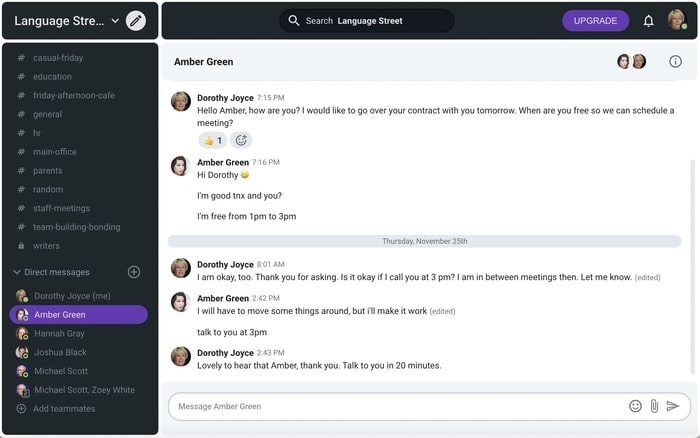
Hold your meetings over Pumble
🚧 Different working styles
Different generations = different working styles and a bunch of problems for you.
Different working styles come with different communication styles and once again, you’re the one who has to balance everything out.
You’ll come across a variety of combinations at work:
- For some employees, doing things thoroughly and slowly is okay while others prefer multitasking and finishing tasks on the go.
- Some will always take work seriously and strictly follow rules whereas others might always seek shortcuts.
- Many like to work in teams and others prefer individual tasks.
In essence, managing a multi-generational workforce seems a lot like the lottery — you don’t know what you’re going to get but you have to act accordingly.
🚧 Negative generational stereotypes
Although highly inappropriate, stereotyping remains a silent destroyer of functional work settings. Many of us have grown up in environments where stereotyping was done either intentionally or unintentionally — so we simply can’t avoid transferring it to our workplace, whether we want it or not.
You realize how this can become a major issue in a company of several generations — especially when most stereotypes come with negative connotations.
Beware of the common negative stereotypes about generations:
| Silent Gen | Baby Boomers | Gen X | Millennials | Gen Z |
|---|---|---|---|---|
| “Too old” | “Too old to have fun” | “Lazy” | “Everyone’s a winner” | “Tech dependent” |
| “Out of touch” | “Hippies” | “Not tech-savvy” | “Entitled” | “Short attention span” |
| “Silent” | “Technophobes” | “Focused on money” | “Too much tech” | “Can’t handle face to face” |
| “No tech skills” | “Stuck in ways” | “Cynical” | “Self-centered” | “Obsessed with social media” |
| “Too conservative” | “Problem causers” | “Bad parents” | “Uneducated” | “Negative outlook to future” |
🚧 Adapting to change
The way each generation adapts to change can also get in the way of effective communication and progress. Some might find it hard to accept technology, others might never get used to flexible working hours. Moreover, the newly popularized workplace arrangements remain uncharted territory for many.
While there’s no way to predict every employee’s reaction to change, it’s essential to normalize it and understand how to communicate change to your team to maintain productivity and flexibility.
Communicate change effortlessly over Pumble
💡 Working with different generations means working with different teams. Learn more about types of teams and the way they collaborate here: Different types of teams and how they collaborate
How to improve communication between generations at work
We have finally come to the most interesting part for you — tips and tricks to help your diverse staff work together effectively. I hope you know there’s no one-size-fits-all approach to resolving communication issues between different generations. But, one thing is the same for every organization — they have to come up with an internal communication strategy that will work for THEIR multi-generational workforce.
Your organization might have 20, 200, or 2000 people, but for your communication strategy to work, you will have to consider each person’s communication preferences and expectations. Overcoming communication barriers will work only if everyone’s on board. Here’s how to make communication across generations work:
1️⃣ Establish clear communication rules
The goal of having clear rules on communication is to provide your people with official guidelines and minimize the chances for communication breakdowns. In present-day, high-tech, and mostly digital work settings, this is simply a must. Here’s how to achieve this:
#1 Create a clear communication policy
In a multi-generational organization, communication rules are helpful. Try to come up with a clear communication policy and outline all the specificities of cross-generational communication.
Start by answering some of the following questions:
- What communication channels are used for daily communication?
- Example: Pumble is the official communication app, Zoom is used for video conferencing, Gmail is the official email service, etc.
- What communication channel is used the most? Is this the most efficient channel?
- Example: Email, team messaging app, video conferencing tool, etc.
- What communication channel should be used for emergencies?
- Example: Phone calls after office hours.
- What communication should be a top priority?
- Example: Internal communication, external communication, communicating with the media, etc.
- What is non-negotiable when it comes to communication?
- Example: Weekly and monthly meetings; face-to-face or video meetings, etc.
- When are employees expected to respond to emails, text messages, or IM?
- Example: Email should be answered within 24 to 48 hours.
- How is time-off (vacation, evenings, deep work, etc.) handled?
- Example: Employees aren’t expected to respond after 5 pm on workdays and on weekends.
- How should daily, weekly, and monthly meetings be conducted?
- Example: Weekly meetings should be short and always have a different host.
#2 Provide training on communication technology
While communication technology has become an integral part of most modern workplaces, consider the less tech-savvy generations, like the Silent Gen or the Baby Boomers. Don’t let technology affect good team communication and collaboration — teach everyone to use the communication tools to their advantage.
Organizing a training program for those who find it difficult to master certain apps or software will be beneficial for everyone in the long run. If you’ve chosen Pumble as your team messaging app and expect every employee to use it for daily communication, you should also ensure that everyone knows what it is and how to use it effectively.
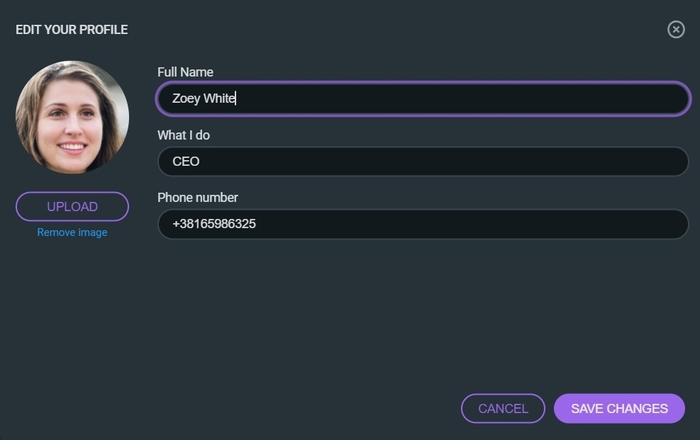
Try Pumble — there’s no steep learning curve
#3 Provide adequate equipment
Although members of some generations prefer using their own devices for work, companies should insist on providing professional equipment for security reasons. Firstly, you will address the issue of data security and reduce the cyber security risks. What’s more, you’ll boost productivity and efficiency by giving employees the tools they need to do their best work. Ultimately, you’ll make sure that technology doesn’t stand in the way of talent.
2️⃣ Acknowledge the multi-generational workplace
If you have a company with employees of different ages and backgrounds, the best you can do is embrace it and help it thrive. Make use of diverse talent, skills, and qualities — when properly combined, these can create a powerful and successful team. Consider the following:
#1 Address the communication challenges
Don’t disregard the communication issues in the workplace, however insignificant they may seem. When miscommunication reigns, there’s no room for collaboration and success.
You’re probably aware that an infinite number of communication problems may be giving you headaches at work but you can’t be intimidated by that. You’re the one in charge and the one everybody will come to when they hit a bump in the road.
You have to think ahead and have a bunch of solutions hidden somewhere in your office. So, the next time someone comes in and says “Hey, I don’t know what to do about this”, you can say “Here, try this and see how it goes.” Teach your employees how to be effective communicators and watch communication barriers fall to oblivion.
💡 For more information about overcoming communication challenges at work, check out our text: How to overcome 14 common communication challenges in the workplace
#2 Learn what motivates each generation
Motivation does all the work. A satisfied employee is by default more flexible, more understanding, and more productive. They are also more willing to communicate and collaborate with others. Happy employees perform much better at work — they are your most powerful asset.
If you want your people to communicate and collaborate better, learning what motivates them goes without saying. According to Dr. Bea Bourne, DM, a faculty member in the School of Business and Information Technology at Purdue University Global, each generation is motivated by the following:
| Silent Gen | Baby Boomers | Gen X | Millennials | Gen Z |
|---|---|---|---|---|
| Respect | Company loyalty | Diversity | Responsibility | Personalization |
| Recognition | Teamwork | Work-life balance | Quality employer | Creativity |
| Providing long-term value to the company | Duty | Their personal and professional interests | Unique work experience | Individuality |
#3 Recognize individual differences
Most present-day companies have learned to use individuality to their advantage. In these, Individual differences are celebrated rather than disregarded. And people are thrilled about it! They get to be who they are while doing their (dream) jobs — from the perspective of a Millennial, it can’t get better than that.
To help employers master this part, Dr. Bourne made sure they know what to do by providing them with concise answers on improving workplace conditions across generations:
| Silent Gen | Baby Boomers | Gen X | Millenials | Gen Z |
|---|---|---|---|---|
| Provide an enjoyable work environment | Give specific goals and deadlines | Give immediate feedback | Allow for flexible schedules and work assignments | Offer opportunities to work on multiple projects simultaneously |
| Emphasize stability | Allow them to be mentors | Provide flexible work arrangements and work-life balance | Handle by results | Ensure work-life balance |
| Create opportunities for contribution | Offer coaching-style feedback | Extend opportunities for personal growth | Get to know them personally and give immediate feedback | Support self-directedness and independence |
#4 Settle conflicts accordingly
Conflicts in the workplace are frequent and can be caused by many things, particularly in cross-generational companies. The way you resolve conflicts will mostly depend on the context and you are expected to approach it properly. Consider the following steps:
- Give everyone a voice
- Do not finger-point
- Specify the issue
- Identify the need
- Try to find a common understanding
- Work on an optimal solution
To get to the bottom of a conflict, you have to first understand it — in other words, find out the cause of it, identify the involved parties, learn their personal characteristics, etc.
#5 Adapt feedback to each generation
Constructive feedback practices in an organization that employs several generations can be quite an ordeal, but learning to adapt the way you deliver feedback can help dodge major bullets in cross-generational workplaces.
Let’s go over some handy tips:
- Silent Generation
- Be straightforward and tactful
- Avoid being condescending
- Encourage them to participate in performance reviews
- Ease their concerns about being forced to retire
- Baby Boomers
- Recognize their hard work
- Deliver feedback as an opportunity for growth
- Focus on plans, strategies, and goals
- Acknowledge their insights
- Gen X
- Praise their individual growth
- Make it regular
- Reward positive performance quickly
- Consider the work-life balance
- Millennials
- Use the technology to deliver feedback
- Make lists and summaries
- Give positive reinforcement
- Validate their contribution to the organization
- Gen Z
- Make it frequent
- Make it short
- Be direct and
- Keep it constructive
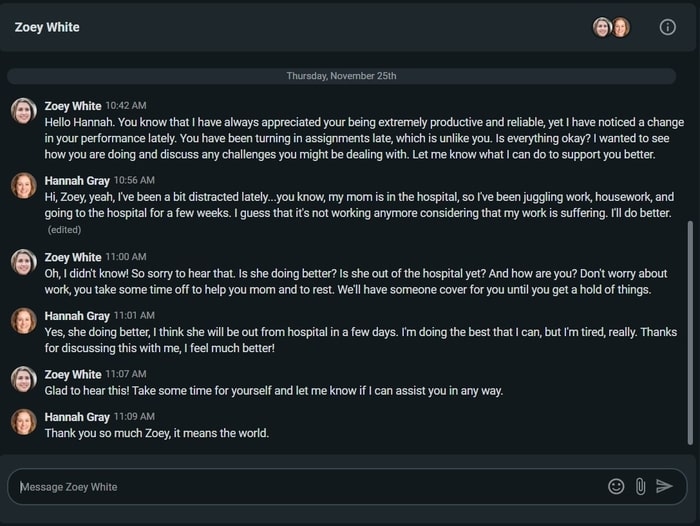
3️⃣ Balance the generational GAP
Creating a work environment in which generational differences aren’t that noticeable is challenging, I’m sure. But it’s also very necessary. Diversity should be seen as a strength rather than a weakness — but one should know how to balance the generation gap and not let hierarchy hamper their efforts. We can help you out a bit. 👇
#🅶: Grow out of stereotyping practices
Stereotyping isn’t a novel practice at work — it has been affecting clear judgment and pushing people to make assumptions about others based on many factors, including their age.
Although sometimes unconscious and innocent, putting labels on people can be hurting and unnecessary. Plus, it can be a basis for a discriminatory work environment and consequently cause productivity issues and even legal problems.
Diversity training, role-playing, and workshops are good ways to teach your employees what negative stereotypes can do to a team. Reliving real-life scenarios, people can learn what effects negative stereotypes can have on people and understand why they can’t be part of a nurturing work environment.
#🅰: Advocate diversity and inclusion
Modern work environments are one of the most diverse and inclusive ones in the history of business. By choosing to celebrate and praise your diverse workforce, you’re letting them contribute their unique experience to the organization. All companies should strive for creating a diverse and inclusive workplace.
If you’re still not convinced, here’s what benefits your business can enjoy by embracing diversity and inclusion:
- Bring out new perspectives
- Support innovation
- Ensure better problem-solving and decision-making
- Increase employee engagement
- Boost productivity and performance
- Have everyone work toward the same goal
#🅿: Promote a respectful office language etiquette
Having a common ground on what kind of language should be used for communication during office hours will make everyone’s life easier. Sure, it will be challenging to stop using slang, abbreviations, or overly formal language — but a consistent office language etiquette will bring stability and regularity to your cross-generational team and help minimize communication breakdown.
Aim for a professional and respectful tone, but also allow your employees to express their language differences in an inoffensive way. Reinforce clarity and transparency in communication to maintain understanding among your cross-generational workforce.
4️⃣ Encourage stronger relationships among employees
Close-knit teams are more likely to perform better, engage more frequently, and practice effective decision-making. For a multi-generational company, it can be challenging to do this but it’s not entirely impossible. You can help your team feel more connected by encouraging frequent communication, creating chances for learning, and organizing various activities.
#1 Support frequent communication
Don’t be afraid to give your people a little push on this one — they might be hesitant or shy to make the first move. Encourage them to communicate both on formal and informal topics but also make sure they are maintaining a balance between work communication and chit-chat.
Pumble will do wonders here, especially as it allows users to create public and private channels, depending on what they need. You can use it for formal communication and create strictly professional channels for sharing relevant company information. You can also create channels for communicating non-work-related stuff, such as a #random channel, a #movie-night channel, or a #friday-afternoon-cafe channel.
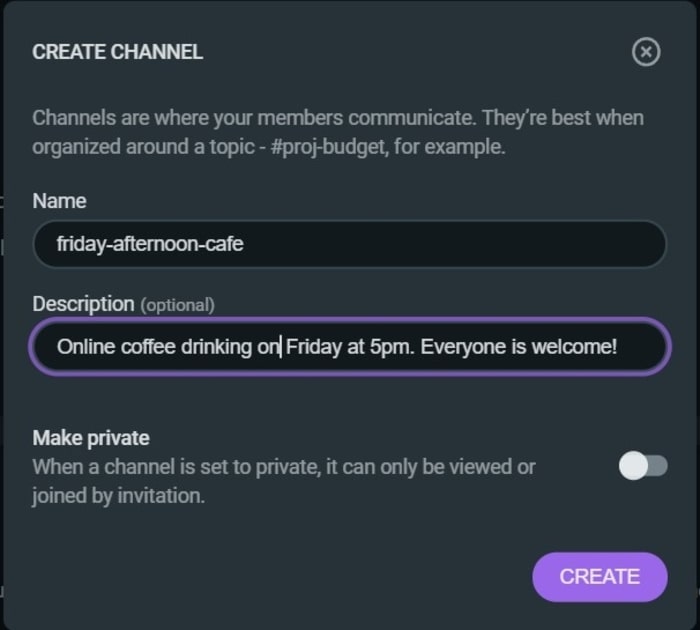
Bond with your coworkers over Pumble
#2 Create a learning environment
What’s great about a multi-generational workplace is that employees can share their diverse experiences and learn from each other! Here are a few ideas:
- You can put senior employees in charge of mentoring junior ones on important company practices.
- Considering that junior employees are digital natives, they can help the seniors with modern communication technology.
- Juniors should also be given opportunities to showcase their skills through presentations, workshops, or webinars.
- You can make the practice of assigning work buddies a common practice in your company — it will help new employees adapt quicker.
- Find out what topics all employees are interested in and provide them with opportunities for growth by investing in courses of their preference.
You’ve got so many options now that it would be a shame not to take them to your advantage.
#3 Host team-building and team-bonding activities
What can help people feel more connected than a little bit of fun and relaxation? Even in remote and hybrid work settings, organizing entertaining and enjoyable activities isn’t an impossibility anymore. You can consider the following:
- Team-building activities: A weekend away to the mountains, a spa day, or a whole-weekend teaching seminar
- Team-bonding activities: (Virtual Pub) Trivia, (virtual) happy hours, or a (virtual) book club — note that all team-bonding activities can be adapted to your work setting, be it remote, hybrid, or distributed.
Whatever you opt for, don’t make it a one-time thing. Aim for two or three get-aways a year and weekly/monthly fun activities. Sometimes, strong and meaningful relationships need a little push to reach their full potential — why let disconnectedness stand in the way of that?

Engage your employees with team-building games on Pumble
5️⃣ Be a role model
Whatever you want to see happen in your organization, you have to model it. People are always looking for role models, so be one. If you want your cross-generational staff to communicate properly, you have to show them how. If you want them to respect their colleagues and teammates, you have to treat them all with respect, too.
Allow yourself to be approachable and work on flattening the hierarchical curve — establish yourself as a collaborative leader rather than a control-and-command one.
Collaborative leadership might be the best approach for a multi-generational workplace. Why?
Collaborative leaders are led by the idea that we’re smarter together — they choose to rely on the collective intelligence and talent of their organization, especially when it comes to resolving intricate problems and engaging everyone in decision-making. They know that a cross-generational workforce will have a lot to contribute, thanks to their varied backgrounds and perspectives.
Help your multi-generational teams communicate better with Pumble
To improve communication across generations at work, you need to establish clear communication rules.
For example, you can encourage your team members to use a team communication app, such as Pumble, for daily communication — to keep all conversations well-organized in one place thanks to Pumble channels.
Moreover, with Pumble, you can ensure everyone will be on the same page, as the software is intuitive and easy to use, so even the less tech-savvy generations can find their way around Pumble in no time.
After all, the most important thing is to make your multi-generational teams feel connected — so, along with strictly professional channels, encourage your teammates to create channels for off-the-record topics, such as a #random, #movie-night, and #books channels, for example.










